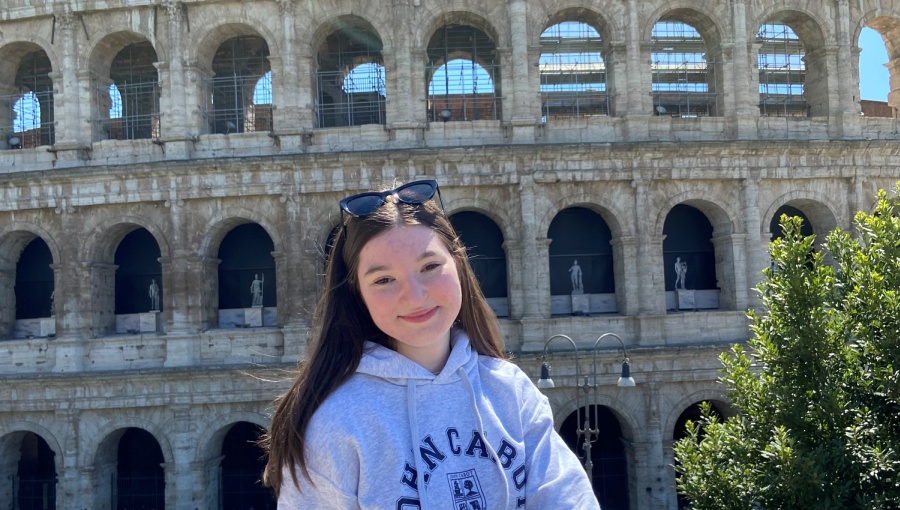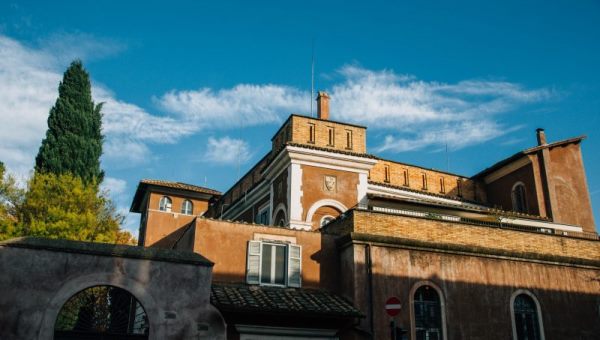Trastevere: La Repubblica’s New Guidebook with a Heart and Soul
What makes Trastevere so attractive to both tourists and Romans alike? What are its most popular sights and best-kept secrets? What are the best restaurants in the area for exquisite Roman dishes?
La Repubblica, one of Italy’s most important newspapers, published Trastevere in December 2018 as the first in a new series of guidebooks on the neighborhoods of Italy’s most important cities. The book contains suggestions for quality restaurants that embrace the Roman tradition, unusual sights to visit, unique shops, and much more. All this is explored through genuine anecdotes of people who lived, or still live, in the most iconic area of Rome.

(from left) Giuseppe Cerasa, Federica Capoferri, Sabrina Alfonsi, and JCU President Franco Pavoncello
Giuseppe Cerasa, the editor of the guidebook, together with Federica Capoferri, professor of Italian and Italian Cinema at JCU, Sabrina Alfonsi, president of Rome’s first municipality, and JCU President Franco Pavoncello presented Trastevere on February 21 at John Cabot University.
One of the most fascinating Roman neighborhoods, Trastevere is the perfect union between antiquity and modernity. With each step on centuries-old cobblestones, you take a walk through history. The narrow, winding streets, a good plate of carbonara pasta, and vintage shops are just a few things characterize Trastevere, an area full of hidden treasures of which not even Romans are often aware.
President Pavoncello said that the guidebook speaks to both those who know nothing about Trastevere and those who “live it” every day. He believes that this guide provides a complete picture of the neighborhood in all its “unexpected elegance and beauty.” In the 1960s, Trastevere was very different from the way it looks today. Back then, it was a rundown and poorly maintained area, which has been able to flourish in recent years. According to Sabrina Alfonsi, John Cabot University has been a most valuable addition to the local community. In addition to being Trastevere’s largest industry, JCU has contributed to making Trastevere Rome’s most international area.
For Giuseppe Cerasa, the editor of all the guidebooks published by La Repubblica, Trastevere is different from all other guides because it has “a heart and a soul.” The journalists who collaborated in writing the guide turned it into a collection of personal memories narrated by people who currently live in Trastevere. Within these stories are included recommendations for typical Roman restaurants, timeless places to visit, and historical and cultural information about Trastevere. An entire section of the guide, written by Stefano Petrella, is dedicated to the neighborhood’s nightlife.
Alfonsi said that this guide is special because it highlights not only the life and history of Trastevere but also some of its long-standing challenges. Trastevere’s main problem is traffic, which is why some areas are restricted driving zones. Another difficulty for Trastevere is the excessive amount of garbage that is produced in the busy neighborhood. To tackle this problem, Trastevere actually has three street cleaning shifts, the only Roman neighborhood to do so. In addition, it was the first area in Rome to adopt recycling 20 years ago. Regardless of Trastevere’s problems, the guidebook highlights all its charm and provides important answers to tourists who often have high expectations of the Eternal City.
The guidebook portrays the most international neighborhood in Rome in an extremely faithful way and offers a valuable point of reference for both tourists and Roman citizens who want to explore Trastevere at a deeper level.





